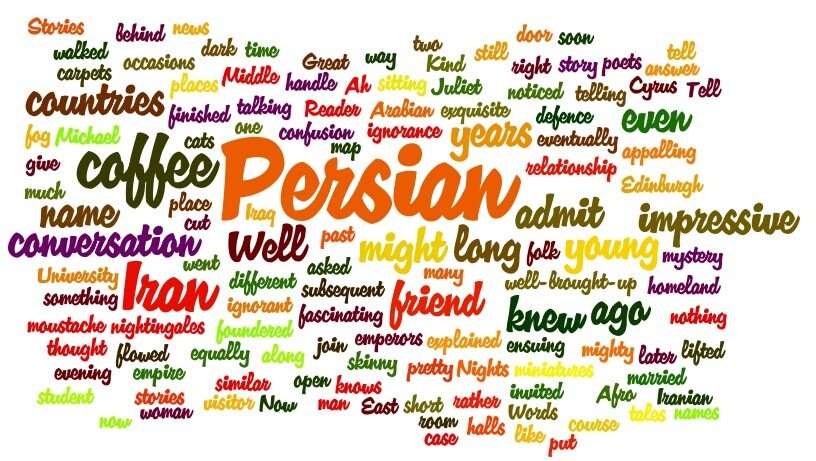Where do Persian words for sky and earth come from?

If you also wonder where Persian words come from and what their literal meanings are, please read on!
The etymology of Persian words is not always very familiar to the public. In contrast, the roots of words in other languages, such as Arabic and English, are more accessible. For example, it is easy to recognize three content letters in Arabic and find other words of the same root accordingly. Take the Arabic amil “doer, agent.” It is easy to recognize the root amal “do,” as the content letters are a-m-l. In contrast, for Persian words such as aseman “sky,” and zamin “earth,” it is difficult to foresee a root. So, why is that?
Persian words are not formed according to some content letters, like in Arabic. Interestingly, what we may generally consider as the root of the words in Arabic may not be the real Arabic root of the word either. For instance, mohandes “engineer” may seem an originally Arabic word which shares a root with other words such as hendese “geometry,” al-hondos “geometrician,” and the like. However, it is well-documented that these words are derived from Middle Persian handazag “measurement” which is in New Persian andaze with the same meaning.
Etymology is a complicated science that dedicates itself to closely studying words and their structures, formations, and meanings in different languages throughout their existence. It considers loanwords, loan translations, the coining of new words, and the first appearance of each word in the entire corpus of every language. Another helpful resource for studying the roots of words in languages is considering their cognates, i.e., their similarly formed counterparts, in other languages of the same language family.
Persian is a language belonging to the Iranian language family, which in turn is derived from Indo-Iranian languages, which are an eastern descendent of the greater family of Indo-European languages. Therefore, words in Iranian languages such as Persian, Avestan, Sogdian, and Bactrian, may have similarly formed counterparts in Indian languages such as Sanskrit, or in European languages such as Greek and Latin. For example, istadan “stand” in Persian is derived from the same Indo-European root from which the English “stand” is also derived.
In this example, one may realize that the Persian verb also has similar denotations as the English cognate. For instance, istadan in Persian means “stand” as well as “stay,” “resist,” and “stop.” In English, too, “stand” can mean “stay” and “stop.” Thus, in the sentence, “he stands against what they told him,” the verb “stand” means “resist.” One can also observe the same root in “constant,” which is derived from Latin. “Constant” contains the prefix con- “together,” the root -sta- “stand,” and the suffix -ent, which is a subjective adjective maker. In this word, -sta- is used in the sense of “stay (unchanged).”
Let’s go back to the Persian words that we mentioned in the title. As interesting as it might sound, the Persian word for “sky” may have been derived from the root for “stone.” Apparently, ancient Iranians believed the sky was made of a huge stone. The Persian word for “earth” is an old word that literally meant “soil, land.” The same root is also attested in other languages of the same family with relevant phonetic alterations. For example, it is in Old Iranian *zma- and Sanskrit jma-. Among European languages, it is easily recognizable in Russian zemlya.
Unfortunately, the Persian Language did not have an etymological dictionary or reference for a long time. Only recently, Dr. Mohammad Hasandoust at the Persian Academy published a five-volume etymological dictionary for the Persian Language. It is still constrained and does not include all Persian words. Still, it comprises a significant new step in studying Persian and other Iranian languages.
Finding the roots of Persian words is very difficult for the experts. Persian comes from an extensive language family with very ancient roots. Older Iranian languages such as Old Persian and Avestan are among the oldest documented languages in the Indo-European family. A wide variety of middle and modern stages of the language also renders a remarkable corpus of Iranian languages. On the one hand, this is a complex situation as it would be challenging to get documented. While, on the other hand, it offers a priceless opportunity for a close study of language evolution.
*S. Fatemeh Musavi has PhD in Ancient Languages and Cultures
Leave a Comment